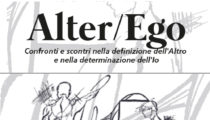CALL FOR PAPERS (ENG) Sinking into the Mediterranean: Reading and…

The Cultures of Dissent in Europe in the second half of the Twentieth Century
Edited by Claudia Pieralli and Teresa Spignoli
***DEADLINE EXTENDED: FEBRUARY 29, 2020***
From the 1950s onwards, the European context was marked by the emergence of movements of cultural dissent that involved both western and eastern countries, with the birth of forms of literary and artistic protest against the cultural and political establishment, which manifested themselves in an antithetical, yet specular, way in relation to the separation line between the Eastern bloc and the Western bloc (the Iron Courtain). The historical events that marked the two blocs (including the 20th Congress of the CPSU and the beginning of the destalinization, the 1956 ‘Hungarian Revolution’, the affirmation of neo-capitalism, May 1968 in France, Italian Sixty-eight and Prague Spring) are indeed organically linked to forms of literary and cultural protest, such as Group 63 in Italy, the Tel Quel group and the Nouveaux Romanciers in France, International verbal and visual experimentation and, with specific reference to the Soviet area, the whole of the culture conveyed through the capillary clandestine circuit of Samizdat, or other forms of channels bordering the official sphere. The result was the formation in the second half of the 20th century of a vast area of underground culture involving the two political blocs into which Europe was divided. This is the theme of the research project “Alle due sponde della cortina di ferro: le culture del dissenso e la definizione dell’identità europea nel secondo Novecento tra Italia, Francia e URSS (1956-1991)” (On both sides of the Iron Curtain: the cultures of dissent and the definition of European identity in the second half of the twentieth century between Italy, France and the USSR (1956-1991)), carried out at the University of Florence. The aim of this call is to widen the project to the entire European scene, both in its western and eastern dimensions.
Through an interdisciplinary and comparative approach, the number X of Between “The cultures of dissent in Europe in the second half of the twentieth century”, intends to receive contributions dedicated to this topic by favouring geographical and cultural areas not covered by the project, but displaying movements of literary and artistic protest as a relevant and qualifying phenomenon: Spain, Portugal, Netherlands, Belgium, Germany, England (with reference to the entire Anglo-American scenario), tcountries belonging to the former Soviet bloc, such as Hungary, Poland, the Czech Republic, Slovakia, Bulgaria and countries of the former Yugoslavia. The chronological span includes movements developing from the second post-war period to the end of the twentieth century, that is, from the protest of the neo-avantgardes to the movements of dissent arising in the postmodern era, and as far as the eastern area is concerned, from displays of “alternative” culture that emerged after Stalin’s death to the collapse of the USSR (1953-1991). Contributions may be made along one of the following lines of development:
- Literary forms of protest, such as the neo-avantgarde (Group 63), the Nouveaux Romancier, Group 47, Los Novísimos, Group 93, The Citizens, the Kiev School, the Circle of Lianozovo;
- Interdisciplinary forms of experimentation, in contrast with the official cultural line, such as Fluxus, the New Theatre, verbal-visual poetry; artistic groups active in the USSR, such as Chelenukty, Mit’ki, Filologičeskaja Škola, Verpa, Moscow Conceptualism;
- Underground movements and/or other contestation movements that adopt artistic-literary strategies as a form of dissent, such as Situationists, Provo, Metropolitan Indians, the beat movement, the Aref’ev Circle, Filologičeskaja Škola, and others;
- Publishers, magazines, cultural centers that are born and operate in contrast with the publishing market and/or that act outside the traditional channels of transmission of culture (even in clandestine form), through the organization of performances, festivals, radio broadcasts, concerts, etc. …;
- Forms and types of illegal publishing and cultural diffusion such as the Soviet Samizdat, in its complex articulation, both of genre (magazines, almanacs, novels, poetic and anthological collections, scattered writings, essays), and of scope (literary/artistic, socio-political, philosophical-religious); the channels, typologies and problems of categorisation of the Magnitizdat (circulation of sound); the channels, typologies and problems of categorisation of the Tamizdat (publishing abroad of works not published or censored in the USSR or in the countries of the block).
Interested parties are invited to contact the curators before sending their contributions if they would like more precise information or if they have doubts about the relevance of their proposal. Also, we suggest to pay a visit to the research project’s website: https://www.culturedeldissenso.com/
Proposals (articles ready for publication and accompanied by abstracts) must be sent by 31/01/2020 following the instructions available on Between’s website, on the submissions page. By 31/03/2020 the texts selected for peer review will be indicated. The articles finally accepted will be published at may 2020.
Proposals in a language other than Italian or in a bilingual version (one of which is in English) are appreciated and encouraged.
For further information, please write to Teresa Spignoli (teresa.spignoli@unitfi.it) and Claudia Pieralli (claudia.pieralli@unifi.it).
Between Journal is published by the University of Cagliari – Maintenance for this OJS installation is provided by UniCA Open Journals, hosted by Sistema Bibliotecario di Ateneo.



